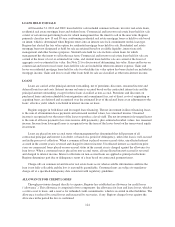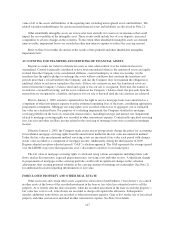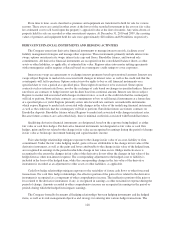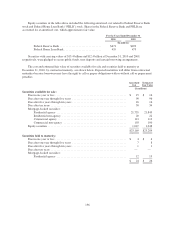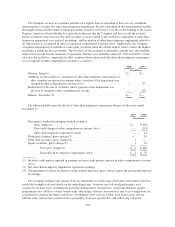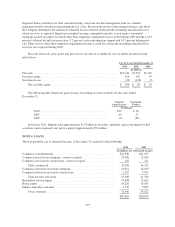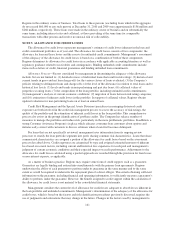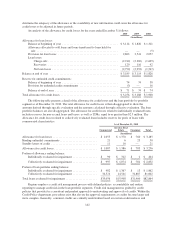Regions Bank 2010 Annual Report Download - page 146
Download and view the complete annual report
Please find page 146 of the 2010 Regions Bank annual report below. You can navigate through the pages in the report by either clicking on the pages listed below, or by using the keyword search tool below to find specific information within the annual report.In April 2009, the FASB issued additional guidance for estimating fair value when the volume and level of
activity for the asset or liability have significantly decreased. Additionally, the guidance addresses circumstances
that indicate a transaction is not orderly. The guidance emphasizes that even if there has been a significant
decrease in the volume and level of activity for the asset or liability and regardless of the valuation technique(s)
used, the objective of a fair value measurement remains the same. This guidance is effective for interim and
annual reporting periods ending after June 15, 2009, and is applied prospectively. Regions adopted these
provisions during the second quarter of 2009, and the effect of the adoption on the consolidated financial
statements was not material.
In April 2009, the FASB issued additional guidance modifying and expanding other-than-temporary
impairment existing guidance for debt securities. This guidance addresses the unique features of debt securities
and clarifies the interaction of the factors that should be considered when determining whether a debt security is
other-than-temporarily impaired. Additionally, it requires an entity to recognize the credit component of an other-
than-temporary impairment of a debt security in earnings and the noncredit component in other comprehensive
income when the entity does not intend to sell the security and it is more likely than not that the entity will not be
required to sell the security prior to recovery. The guidance also expands and increases the frequency of existing
disclosures about other-than-temporary impairments for debt and equity securities. This guidance is effective for
interim and annual reporting periods ending after June 15, 2009, and is applied prospectively. Regions adopted
these provisions during the second quarter of 2009. Refer to Note 3 for additional information.
In June 2009, the FASB issued accounting guidance related to the accounting for transfers of financial
assets. This guidance eliminates the concept of a qualifying special-purpose entity from consolidation guidance
and the exception for guaranteed mortgage securitizations when a transferor had not surrendered control over the
transferred financial assets. The guidance changes the requirements for derecognizing financial assets and also
calls for additional disclosures about transfers of financial assets. This guidance is effective for fiscal years
beginning after November 15, 2009 and its adoption did not have a material impact to the consolidated financial
statements.
In June 2009, the FASB issued accounting guidance modifying how a company determines when a variable
interest entity (“VIE”) should be consolidated. It also requires a qualitative assessment of an entity’s
determination of the primary beneficiary of a VIE based on whether the entity (1) has the power to direct the
activities of a VIE that most significantly impact the entity’s economic performance, and (2) has the obligation to
absorb losses of the entity that could potentially be significant to the VIE or the right to receive benefits from the
entity that could potentially be significant to the VIE. An ongoing reassessment is also required to determine
whether a company is the primary beneficiary of a VIE as well as additional disclosures about a company’s
involvement in VIEs. This guidance is effective for fiscal years beginning after November 15, 2009 and its
adoption did not have a material impact to the consolidated financial statements.
In August 2009, the FASB issued updated guidance to further guidance on how to measure the fair value of
a liability and is effective for the first reporting period beginning after August 26, 2009. The adoption of this
guidance did not have a material impact to the consolidated financial statements.
In January 2010, the FASB issued accounting guidance regarding disclosures of fair value measurements.
The guidance requires additional disclosures related to the transfers in and out of fair value hierarchy and the
activity of Level 3 financial instruments. The guidance also provides clarification for the classification of
financial instruments and the discussion of inputs and valuation techniques. The new disclosures and clarification
are effective for interim and annual reporting periods beginning after December 15, 2009, except for the
disclosures related to the activity of Level 3 financial instruments. Those disclosures are effective for periods
beginning after December 15, 2010 and for interim periods within those years. All provisions of the guidance
were adopted by Regions during the first quarter of 2010. See Note 21 for additional information regarding fair
value measurements.
132




